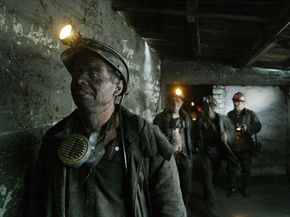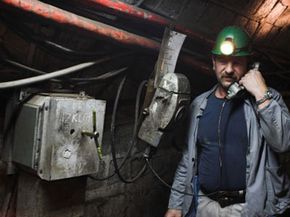There are few situations more terrifying than being trapped underground with no visible means of escape. Miners risk being caught in this situation every day they go to work. In the United States, the Mine Safety and Health Administration establishes guidelines and safety measures that help minimize the chance of a disaster. But sometimes that's not enough.
According to the Bureau of Labor Statistics, the fatality rate for miners in 2007 was 24.8 per 100,000 people employed. Only the collective industries of agriculture, fishing, forestry and hunting had a higher fatality rate. Not every fatality was the result of a collapsed mine. An equipment failure or poor safety habits can also end in tragedy. Miners may encounter dangerous gases like methane as they move underground, too.
Advertisement
One of the biggest challenges in mine safety is communication. It's difficult to create a network that works well underground. Most radio waves can't penetrate rock -- you need to have a line of sight between the two transmission points. That's not feasible for most mining operations. A strong communications system underground could help reduce mining accidents and increase the effectiveness of rescue operations.
A wireless radio network would be a key component of an effective communications system. Using radio waves, miners could remain in contact with surface operations. Sensors hooked up to a wireless radio network could send back environmental information to the base of operations, alerting team leaders to potentially hazardous situations before an accident can happen. And with the right tracking system, leaders could keep tabs on where miners are within the mine. In the event of an accident, leaders could determine who was in the area at the time.
Wireless technology is pervasive -- you can find hotspots in airports and coffee shops. Some cities have rolled out municipal wireless networks. You might think that every mine in the world would have them, too. But remember: Radio waves have a hard time penetrating through solid rock. When you design a wireless radio network for a mine, you have to take that into account. We'll look at two of the most common approaches to implementing a wireless radio network in a mine.
First, we'll focus on a system with a funny name: the leaky feeder.
Advertisement





